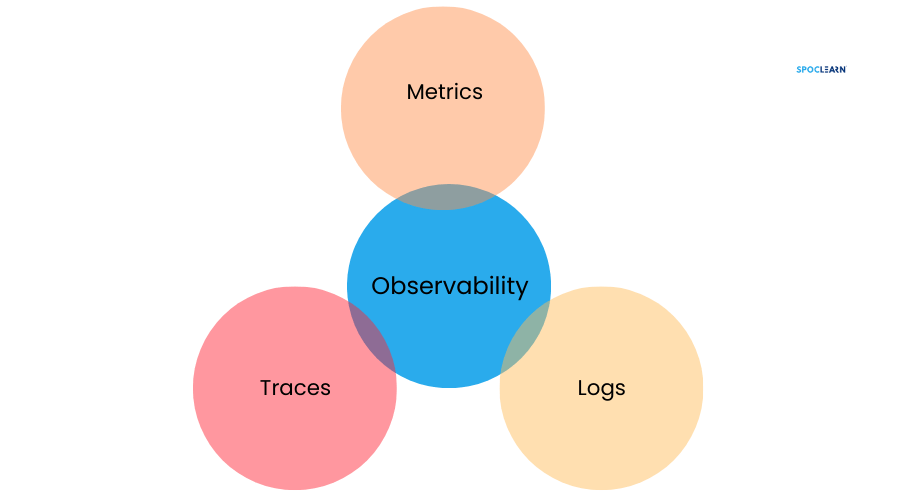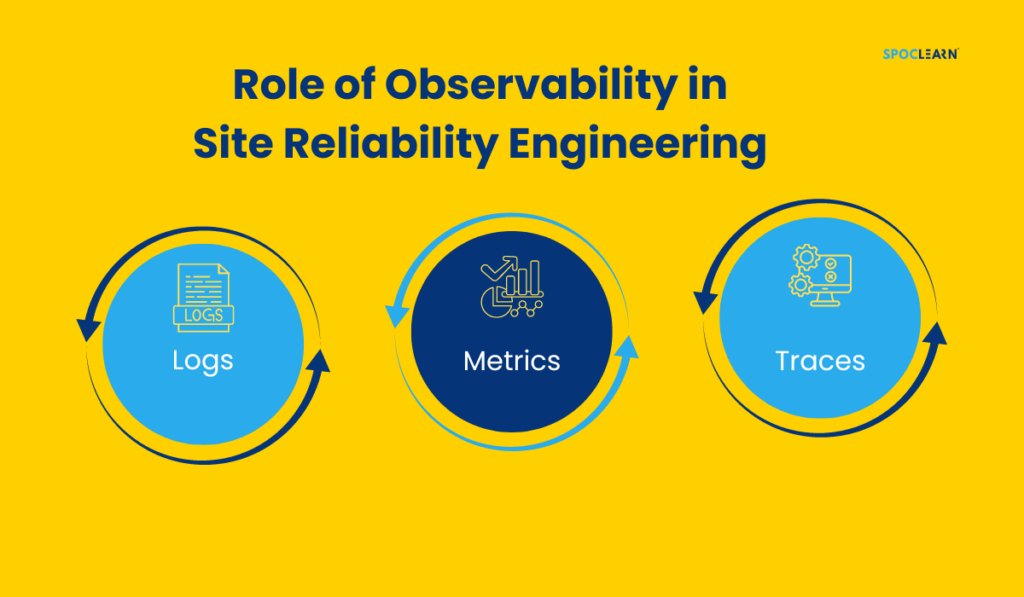Table of Contents
ToggleIn the ever-evolving landscape of IT, Site Reliability Engineering (SRE) has emerged as a critical discipline for managing large-scale, complex systems. A cornerstone of SRE is observability—a practice that enables engineers to gain deep insights into system behavior, ensuring reliability, scalability, and overall performance. This blog explores the crucial role of observability in SRE, its key components, and how it can be effectively implemented to enhance system operations.
What is Observability?
Observability, in the context of SRE, refers to the ability to understand and measure the internal state of a system based on the outputs it produces. Unlike traditional monitoring, which focuses on predefined metrics, observability provides a more comprehensive view, enabling teams to ask and answer any question about system behavior, especially in the face of the unexpected.
Observability is often described through three pillars: logs, metrics, and traces. Each pillar contributes unique insights, together forming a holistic view of system performance.

The Three Pillars of Observability
1. Logs
Logs are time-stamped records of discrete events within a system. They provide detailed information about what happened at specific moments, helping SRE teams to diagnose and troubleshoot issues.
Key Benefits:
- Detailed Insights: Logs offer granular details, making it easier to trace specific events or actions within a system.
- Root Cause Analysis: By examining logs, SRE teams can identify the root causes of incidents, leading to quicker resolution.
Implementation Tip: Ensure consistent and structured logging across all services to facilitate easier analysis and correlation of events.
2. Metrics
Metrics are numerical values that measure the performance of various system components over time. These can include CPU usage, memory consumption, request latency, and error rates.
Key Benefits:
- Real-time Monitoring: Metrics provide a real-time snapshot of system health, allowing for immediate detection of anomalies.
- Trend Analysis: By analyzing metrics over time, SRE teams can identify patterns and predict potential issues before they escalate.
Implementation Tip: Use monitoring tools that support custom metrics, allowing you to tailor metric collection to the specific needs of your system.
3. Traces
Traces represent the journey of a request or transaction as it flows through different components of a system. They provide a detailed map of the system’s behavior, highlighting latencies, bottlenecks, and dependencies.
Key Benefits:
- End-to-End Visibility: Traces offer a comprehensive view of how requests propagate through the system, making it easier to identify performance bottlenecks.
- Dependency Mapping: Understanding the dependencies between services helps in diagnosing and mitigating issues that may arise from complex interactions.
Implementation Tip: Leverage distributed tracing tools to capture detailed traces across microservices, ensuring that even the most complex systems are observable.
Why Observability Matters in SRE
Observability is essential in SRE because it empowers teams to maintain the reliability and performance of systems in dynamic and complex environments. Here’s why observability is crucial:
1. Proactive Issue Detection
Observability allows SRE teams to detect and address issues before they impact users. By continuously monitoring logs, metrics, and traces, teams can identify anomalies early and take corrective actions swiftly.
2. Improved Incident Response
When incidents occur, observability tools enable SRE teams to quickly pinpoint the source of the problem. With comprehensive data at their fingertips, teams can reduce mean time to resolution (MTTR) and minimize downtime.
3. Enhanced System Understanding
Observability provides SRE teams with a deep understanding of system behavior under various conditions. This knowledge is invaluable for optimizing system performance, planning capacity, and ensuring scalability.
4. Facilitates Collaboration
Observability fosters better collaboration between development, operations, and SRE teams. By providing a shared source of truth, it enables cross-functional teams to work together more effectively in maintaining system reliability.
Implementing Observability in SRE
To implement observability effectively within an SRE framework, organizations should follow these steps:
1. Define Key Metrics and Logs
Start by identifying the most critical metrics and logs that align with your SLOs (Service Level Objectives). Ensure that these are consistently tracked across all services and environments.
2. Leverage the Right Tools
Choose observability tools that integrate seamlessly with your existing infrastructure. Tools like Prometheus, Grafana, ELK Stack, and Jaeger are popular choices for collecting and analyzing observability data.
3. Establish Alerting Mechanisms
Set up alerts for key metrics and logs that indicate potential issues. Alerts should be fine-tuned to minimize noise and focus on actionable insights.
4. Automate Where Possible
Automation plays a vital role in observability. Automate the collection, aggregation, and analysis of observability data to ensure that your SRE team can focus on higher-level tasks.
5. Conduct Regular Reviews
Regularly review your observability strategy to ensure it continues to meet the evolving needs of your system. This includes updating metrics, refining alert thresholds, and exploring new tools and techniques.
Real-World Examples of Observability in Action
Several organizations have successfully implemented observability to enhance their SRE practices. For example:
- Netflix uses observability to monitor its massive microservices architecture, ensuring high availability and performance for millions of users worldwide.
- Etsy has built a robust observability framework that allows its SRE teams to detect and resolve issues quickly, maintaining a seamless shopping experience for customers.
These examples demonstrate how observability can be a game-changer for organizations operating at scale.
The Future of Observability in SRE
As systems continue to grow in complexity, the role of observability in SRE will become even more critical. Emerging trends such as AI-driven observability, where machine learning models analyze observability data to predict and prevent issues, are poised to revolutionize the field.
Moreover, the integration of observability with DevOps practices will further enhance collaboration and streamline the development and operations lifecycle. Organizations that invest in observability today will be better equipped to manage the challenges of tomorrow’s IT landscape.
Conclusion
In the world of Site Reliability Engineering, observability is not just a toolset but a mindset. It enables SRE teams to maintain high levels of reliability and performance in increasingly complex systems. By understanding and implementing the core pillars of observability—logs, metrics, and traces—organizations can gain deep insights into their systems, proactively address issues, and ensure a seamless user experience.
